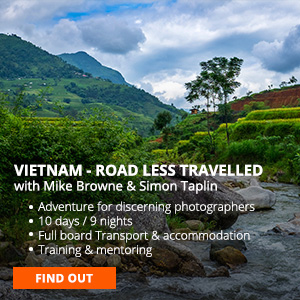Composition Practise Fog
You wake up, look out of the window, it’s dull and foggy so you roll over and go back to sleep. When you could instead be practising your photography. Many people don’t realise that composition, light, apertures, shutter speed, ISO focal length, depth of field and all that other good stuff needs to be practised – and you can do that anywhere.
If you put some additional effort into it such as going to a lake or forest, face towards the rising sun and wait for it to start burning through you can get some stunning images. In this video I just went for a quick walk around a short stretch of my home town so the images aren’t likely to win awards, but it’s all good practise using both the camera the controls and your creativity.
You have to develop a kind of photo radar like a sixth sense that alerts you to the presence of potential images. But how do we do that? Practise. Instead of going out shooting with a group go alone. When we’re in a group it’s all to easy to chat and have fun, instead of looking all around us.
Especially don’t try this when you’re in a hurry (as I was) or with people who are not into photography. They won’t understand why you need to spend time concentrating and you’ll fell under pressure.
This is about taking photos in situations that are less than perfect and finding ways to maximise on them. Great locations aren’t necessarily going to deliver great photos.
What if you’re on a tour at the Taj Mahal and have a 2 hours before the guide calls everyone back to the bus and it’s raining / cloudy / foggy? You have to make the most of it. Find the best compositions you can, think up ways to use the fog / rain / cloud to your advantage. That’s going to take all your observational and photography skills and you can’t do that if you’re stuck working out how to make the exposure or what ISO to use.
It’s all too easy to take a rubbish photo of a stunning location if you don’t ‘connect’ your camera through your eyes to your surroundings. Here are a few tips on the abilities you need.
- Know what controls do
- How to control them
- How to combine them
- Use your eyes and look around you
- Don’t be self-conscious because there are people about
- Watch what the light is doing
- Shoot according to light qualities – not quantity
And don’t forget, just because your camera’s light meter says the exposure is correct doesn’t mean it is. You only learn how and when to over-rule it through experience.
Try changing things between shots. Focus in a different place, change the depth of field and see what it looks like. If the shot doesn’t work delete it. The shot costs you nothing. Not trying stuff out costs you everything.
When you watch this video notice the steps I take. How I try a different depth of field and have to change the ISO to allow me to do it and get a fast enough shutter speed to make sure the image is sharp.
Camera controls don’t work in isolation; they have a knock on effect on each other, which you have to control for both technical and creative reasons. You must think like a photographer.
If you don’t know what the controls are and do, you need the Masterclass in Photography to get going fast with just what you need now explained in simple jargon free steps.











































